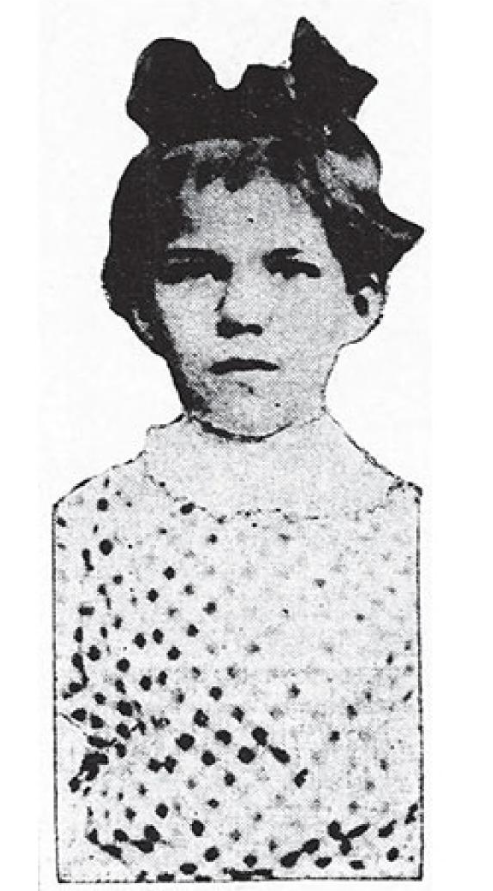This article is written by Shawn M. Herron, the author of Louisville’s Alma Kellner Mystery
The loss of a child is the ultimate tragedy for loving parents. When a child disappears without a trace, the pain is immeasurably greater. This was the heartbreak faced by the parents of young Alma Kellner when she vanished without a trace in December, 1909. For months, her parents, her siblings and her extended family lived in limbo, hoping and praying that she would return to them. Those hopes were dashed when almost six months later, her pitiful remains were located within a few hundred feet of where she was last seen. This set in motion a dramatic search for her killer that led a lone police detective across the United States and beyond.

The Alma Kellner disappearance and murder is a story of fear, the fear all parents have for the safety of their children, the fear of a community for a missing child, and then her killer lurking in their midst. Now, with stranger danger, Amber Alerts, tracking devices and a never-ending news cycle, it is still a parent’s worst nightmare, the worry about their child being abducted, assaulted and murdered. But the early 1900s were a time where young children were accustomed to walking around a neighborhood alone and unsupervised, to school, to church, to the home of a playmate or family member, safety watched over by all the adults who would speak and wave to a child they might see daily. It was a time when they could be expected to be safe and secure while doing so, and the rare case of a missing child would have sent horror through the citizens of Louisville in the pre-World War I era.
When I discovered the story of Alma Kellner’s disappearance, I had already been involved in volunteer search and rescue for many years and had worked a number of missing children cases. In search and rescue, we have the mantra, search is the classic mystery. Most, fortunately, ended quickly and happily, with the child being found safe. A few, unfortunately, did not. Across the United States, there are still the occasional cases of missing children ultimately being found deceased by accident or homicide, or simply never found at all, leaving family in the torture of limbo.
Like any mystery, when I first ran across the Kellner family heartbreak while roaming through old newspaper articles, looking for interesting stories, I was intrigued. I did not know what had happened or how the story would end. The purely fortuitous discovery of Wendling’s trial transcript, a document that under normal circumstances would have long ago disappeared, in the University of Notre Dame’s archives, gave insight into what the jury had before them in making the decision to convict Wendling of the murder. The story of the Kellner and Wendling families was revealed just as it is in any such murder case, through research and investigation. And just like a modern, current criminal case, as the newspaper detailed the facts first of the disappearance, then of the long wait, the discovery and the cross-country chase for the suspect, what we now know was not known to the participants at the time. They could only take each day at a time, waiting anxiously for new information to be learned and revealed. The newspaper readers in Louisville certainly followed the daily events in the case avidly and were relieved when the suspect was apprehended and returned to Louisville, to face justice.
But did the actual killer face a Jefferson County jury? In Louisville’s Alma Kellner Mystery, I have attempted to, given the 100 and more years that have passed since the events and the loss of what little physical evidence was available, to give readers at least some sense of the facts as known at the time, and some enlightenment for the jury’s decision in the case. As is the case even now, in a high-profile murder case, we soon lose any sense of the victim, more so when that victim is a young child, amorphous and unknown to all but her family, and the accused killer soon takes center stage. That is simply unavoidable. I leave it up to the reader to decide, however, if looking back, through what was learned later, both in a possible alternate suspect, and in the behavior of the suspect after he was convicted, whether the man who was convicted, Joseph Wendling, did, in fact, steal away, and ultimately murder young Alma Kellner from where she knelt in prayer.

